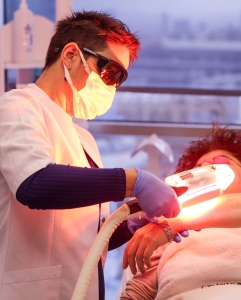CRPS is a condition that causes persistent severe pain, typically affecting an arm or leg after an injury, surgery, stroke, or heart attack. The pain is disproportionate to the severity of the initial injury and can lead to long-term disability. As a chronic pain syndrome with varied treatment outcomes, understanding this condition and exploring potential treatments is crucial for those affected. In this article, we delve deep into what CRPS entails, diagnostic methods, treatment options, and coping mechanisms for managing symptoms.
Treatment Options for Managing CRPS Symptoms
When treating CRPS, the primary objective is to alleviate pain and improve limb function. Clinical guidelines suggest a multimodal approach, incorporating medications such as antineuropathic agents, nonsteroidal anti-inflammatory drugs (NSAIDs), and corticosteroids. In some severe cases, opioids may be prescribed cautiously for pain management, considering the risk of dependency.
Interventional treatments like sympathetic nerve blocks can provide substantial pain relief for some individuals. Physical and occupational therapies are essential components that help maintain or increase range of motion and strength. For those with unmanageable pain or where conventional treatments have failed, spinal cord stimulation or intrathecal drug pumps might be considered.
Each CRPS case is unique, thus necessitating bespoke treatment plans. For valuable information on specialized treatment programs, such as the one offered by Complex Regional Pain Syndrome (CRPS) Treatment, patients are encouraged to consult healthcare professionals experienced in managing this complex condition.
Current Diagnostic Methods for Complex Regional Pain Syndrome

CRPS diagnosis poses challenges due to the absence of a single definitive test, necessitating a combination of clinical evaluation and diagnostic criteria known as the Budapest Criteria. This includes the patient's history, symptomatology, and physical findings. Physicians often undertake a detailed assessment to rule out other conditions that could mimic CRPS symptoms.
Some diagnostic tools are available to aid the identification process. For instance, bone scans, MRIs, or X-rays may show bone and tissue changes, while thermography measures skin temperature variations frequently associated with CRPS. Electrodiagnostic testing helps assess nerve damage, providing crucial information for Type II CRPS classification.
Due to the individual nature of CRPS, two patients may present with varying symptoms, complicating the diagnostic process. A practitioner's expertise in recognizing the nuances of CRPS symptoms is essential to differentiate it from other neuropathic pain disorders.
The Role of Physical Therapy in CRPS Recovery

Physical therapy is pivotal in the successful rehabilitation from CRPS, assisting in the reduction of pain and improvement of affected limb function. Personalized exercise programs aim to restore movement, boost circulation, and discourage atrophy. Desensitization techniques are used to lessen hypersensitivity, gradually reintroducing various textures and sensations to the painful area.
Occupational therapy plays a complementary role, focusing on the return to daily activities. Occupational therapists work closely with patients to regain their capacity to perform everyday tasks, improving their quality of life. This often involves adaptive strategies and the use of assistive devices to support independence.
Mirror therapy is another innovative addition to the physical therapy regimen, where the patient performs mirrored movements with the unaffected limb, creating the illusion of symmetrical movement. This method has shown promise in helping the brain "retrain" its perception, often leading to a reduction in CRPS-associated pain.
Exploring Alternative Medicine and Coping Strategies for CRPS Relief

Apart from medical and physical therapies, individuals with CRPS may find solace in alternative medicine and lifestyle modifications to manage their pain. Techniques such as acupuncture, biofeedback, and meditation can complement traditional treatments, offering holistic relief and aiding in stress reduction, which can exacerbate pain.
Dietary changes focusing on anti-inflammatory foods may also prove beneficial. Nutrition plays a crucial role in overall health, and modifying one's diet can support the body's natural healing processes. Similarly, engaging in gentle exercises like swimming or yoga can maintain mobility without placing undue stress on the affected areas.
Overall, the journey toward managing and overcoming CRPS is multifaceted, often requiring a combination of medical intervention, physical therapy, and psychosocial support. By embracing a holistic approach to treatment and building a knowledgeable and supportive care team, individuals can find a path to relief and reclaim their lives from the grips of CRPS.






